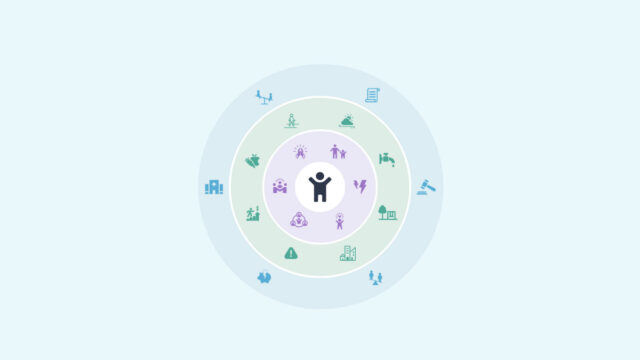Developmental Environments


Key Takeaways
- What surrounds us, shapes us. A wide range of conditions in children’s environments affect their developing brains and other biological systems.
- Beginning before birth, these environmental conditions influence how children develop by shaping their experiences and exposures.
- The developmental environment consists of the full range of experiences and exposures that children have in the places where they live, grow, play, and learn.
Fast Facts

What surrounds us, shapes us. Beginning before birth, the conditions in a child’s developmental environment—which consists of the full range of exposures in the places where children live, grow, play, and learn—shape their developing brain and biological systems, with impacts on lifelong health and well-being. For instance, early life exposure to pollution may increase a child’s risk of developing asthma, with mechanisms like inflammation and altered immune development playing a role. At the same time, positive environmental influences—such as clean air, consistent caregiving, and access to safe green spaces—can support healthy development.
The developmental environment includes a child’s environment of relationships, where the importance of responsive, serve and return interactions with caregivers is well-established and remains critical for healthy development. However, it is also critical that we expand the frame to consider influences from the broader environments where caregivers are raising young children—including the built and natural environments—as well as the systemic factors that shape those environments.
A child’s built environment includes the buildings where they live, the density of surrounding buildings, the upkeep of roads, bridges, and sidewalks, and the availability of safe green space, nutritious food, health care, and safe transportation in the neighborhood, among other aspects of the built environment.
To learn more about Developmental Environments, check out the related Working Paper, InBrief, Videos, and more!
Equally important are influences from a child’s natural environment, including the quality and temperature of the air, the availability of clean water (also shaped by the infrastructure in the built environment), and the ways that climate change caused by the burning of fossil fuels affects the frequency and intensity of extreme weather events like floods, hurricanes, and wildfires.
All these environmental factors play a role in shaping children’s development through direct impacts on their developing biological systems, as well as through indirect impacts via effects on caregivers and the environment of relationships.
Every developmental environment is infused with a combination of positive and negative influences that shape children’s development and health. But these influences—and the exposure to hazards and access to opportunities that they can bring—are not distributed equally. The conditions where young children and their caregivers live are shaped by and deeply rooted in public policies and social history. Whether positive or negative, children’s experiences and exposures impact their development in significant ways, shaping their learning, health, and well-being across the lifespan.
The full range of factors that influence children’s development is extraordinarily complex. Strategies and solutions for improving outcomes—particularly for young children facing adversity—must extend beyond traditional early childhood systems. Addressing environmental risks like air pollution, unsafe housing, or extreme heat requires collaboration across multiple policy domains, from urban planning to environmental regulation to anti-discrimination policies. All communities have aspects of their built and natural environments that have been designed through decisions made over time and can be redesigned to support healthy development. Working together across sectors, we can reshape environmental influences with a science-informed lens to address inequalities and create environments where all children and their caregivers can thrive.